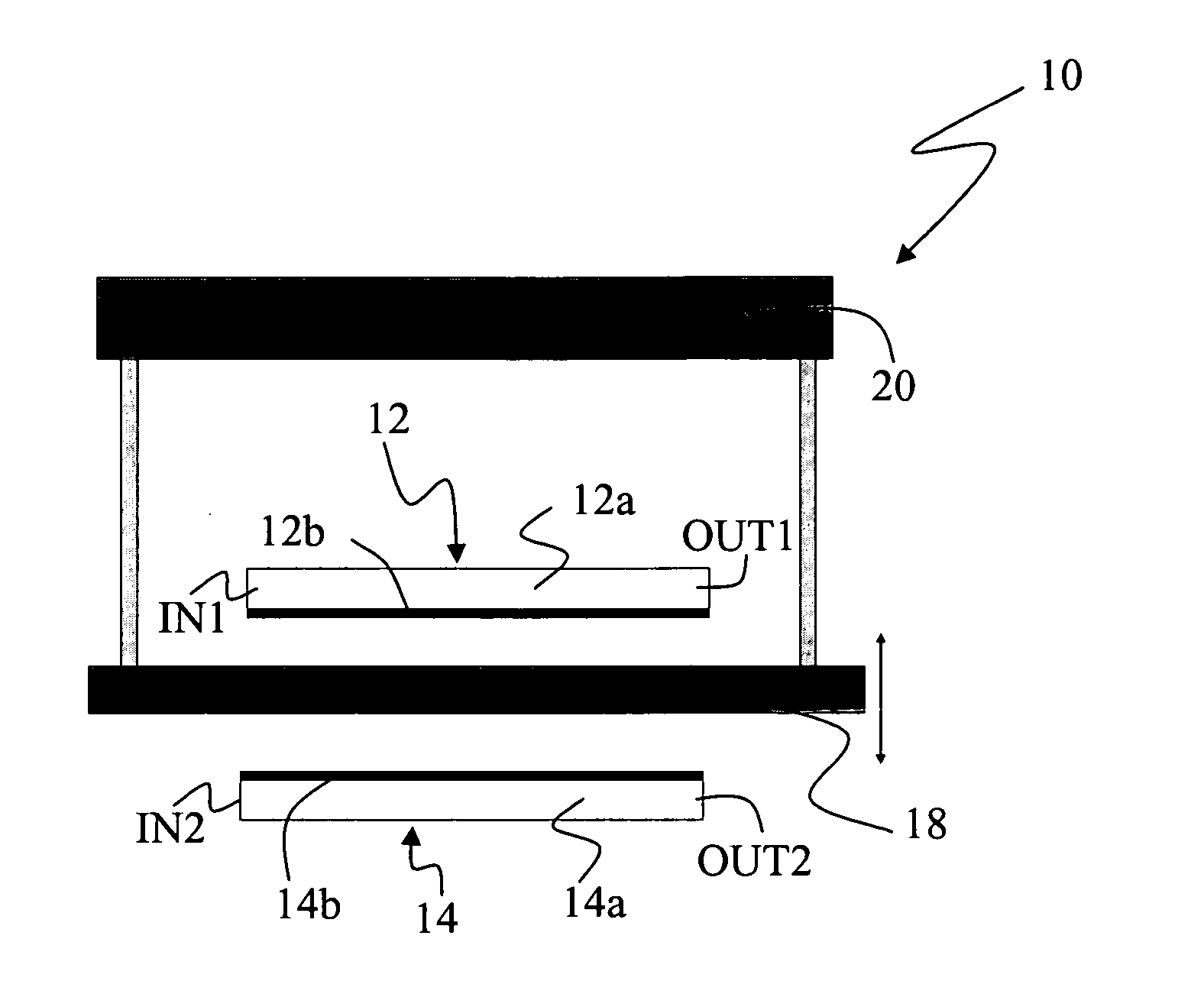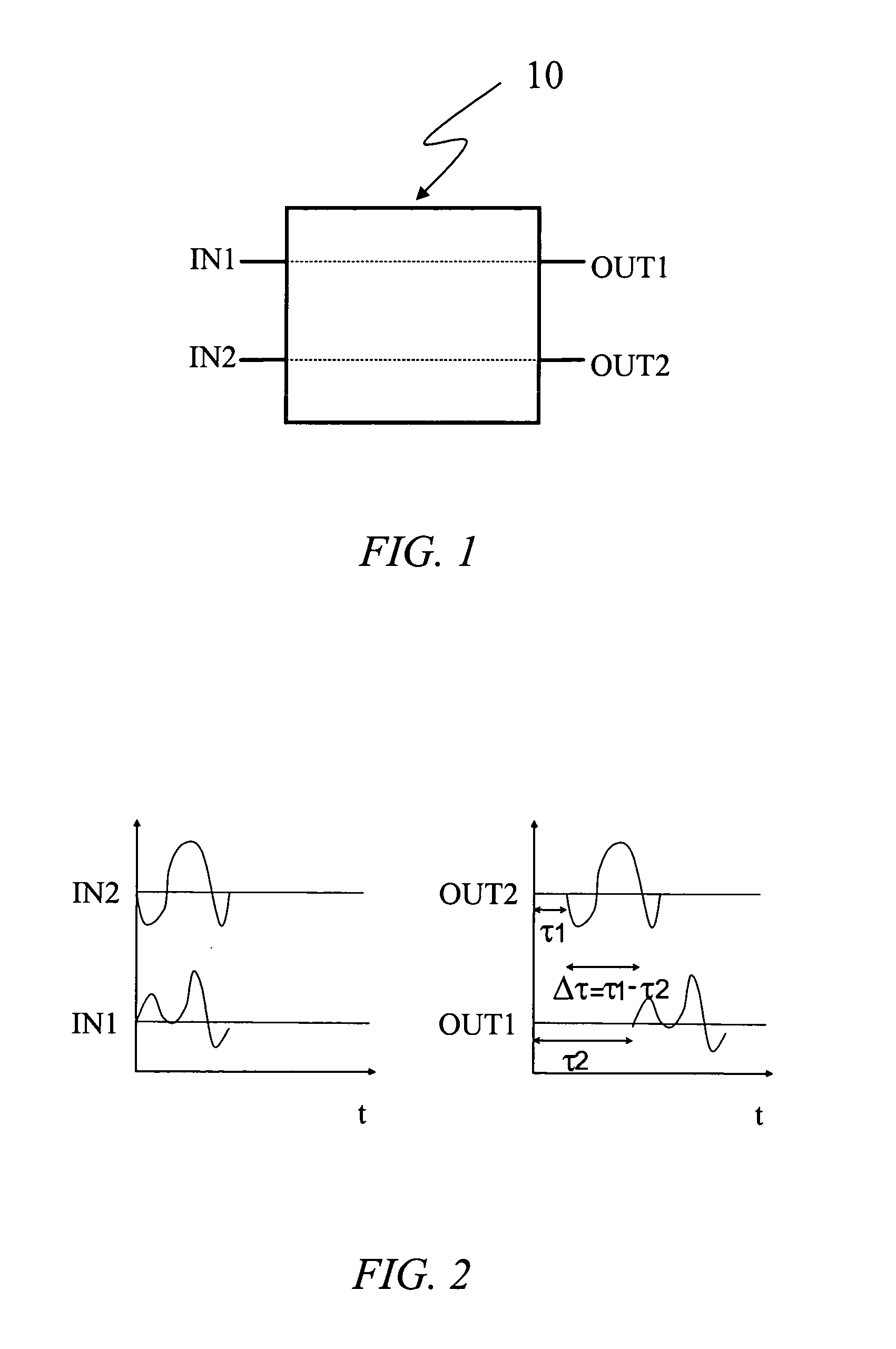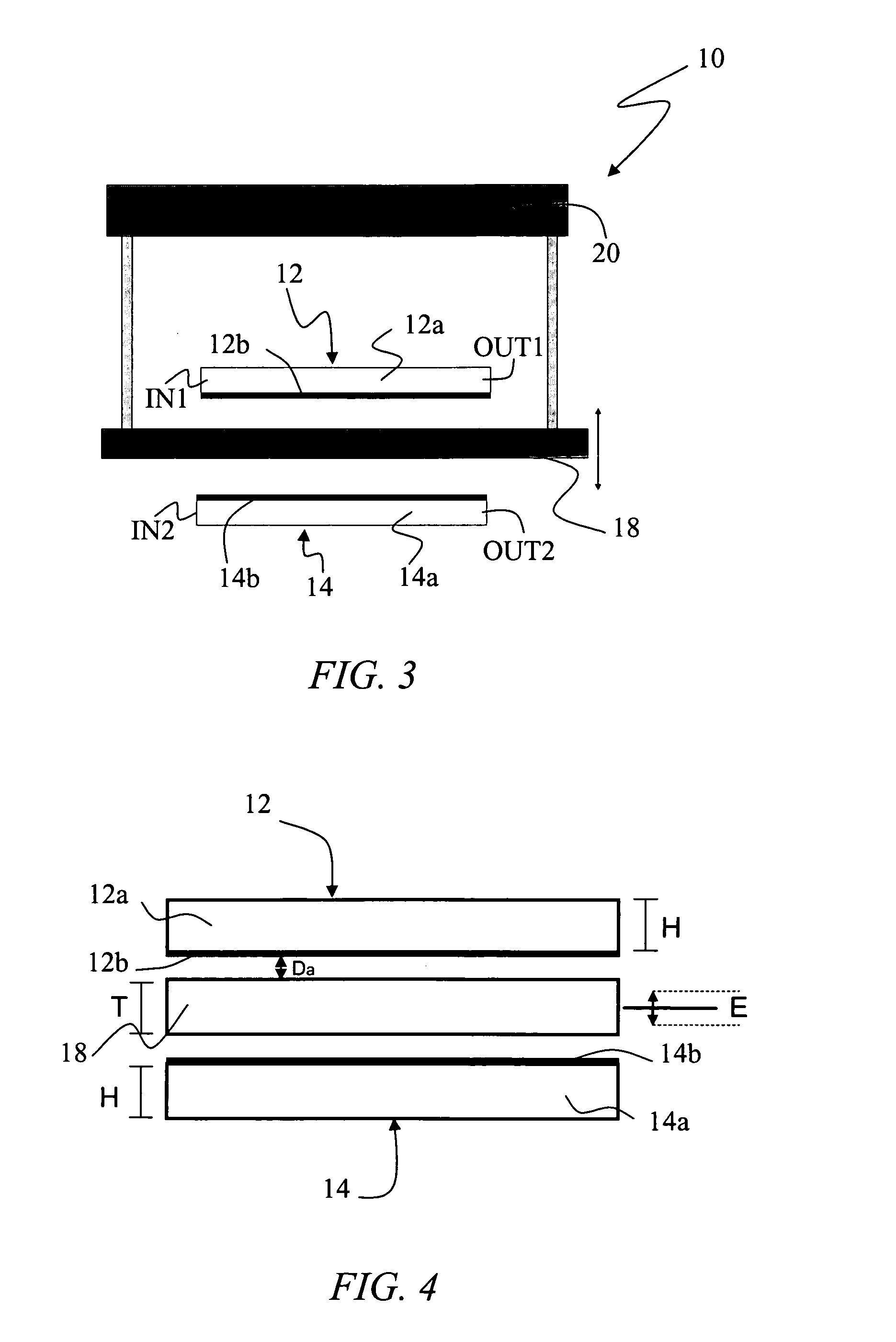Delay element and a corresponding method
a delay element and corresponding technology, applied in waveguides, waveguide types, electrical devices, etc., can solve the problems of insufficient reliability of actuators for continuous operation, return loss, power loss, phase shift, delay,
- Summary
- Abstract
- Description
- Claims
- Application Information
AI Technical Summary
Benefits of technology
Problems solved by technology
Method used
Image
Examples
Embodiment Construction
[0039]In the annexed representations, reference 10 denotes as a whole a delay element suitable for operating on electromagnetic signals e.g. in the radio-frequency (RF) and microwave (MW) ranges.
[0040]The element 10 is a differential tunable delay line (DTDL), that is a four-port device having two input ports (IN1 and IN2) and two output ports (OUT1 and OUT2). The input port IN1 is connected to the output port OUT1 and the input port IN2 is connected to the input port OUT2.
[0041]In operation, two input electromagnetic signals (e.g. P1 and P2 in FIG. 7) feed the two input ports IN1, IN2 of the device 10 and exit from the two output ports OUT1, OUT2. As shown in FIG. 2, the element / device 10 applies a first, time-variable time delay r1 to the electromagnetic signal input through IN1 and output from OUT1 and a second, time-variable time delay r2 to the electromagnetic signal that input through IN2 and output from OUT2.
[0042]As a result of passing through the delay device 10, the electr...
PUM
 Login to View More
Login to View More Abstract
Description
Claims
Application Information
 Login to View More
Login to View More - R&D
- Intellectual Property
- Life Sciences
- Materials
- Tech Scout
- Unparalleled Data Quality
- Higher Quality Content
- 60% Fewer Hallucinations
Browse by: Latest US Patents, China's latest patents, Technical Efficacy Thesaurus, Application Domain, Technology Topic, Popular Technical Reports.
© 2025 PatSnap. All rights reserved.Legal|Privacy policy|Modern Slavery Act Transparency Statement|Sitemap|About US| Contact US: help@patsnap.com



